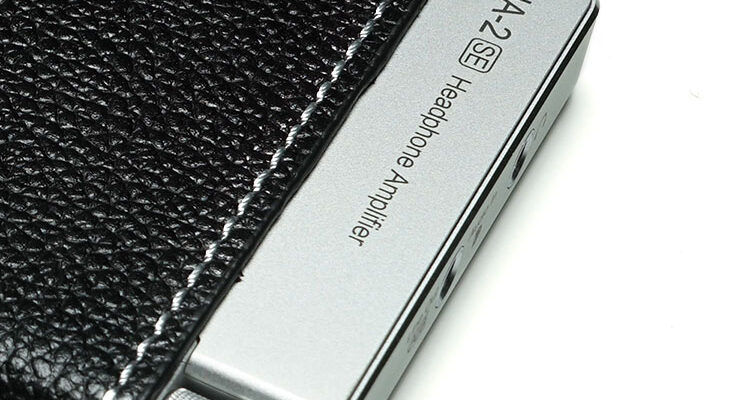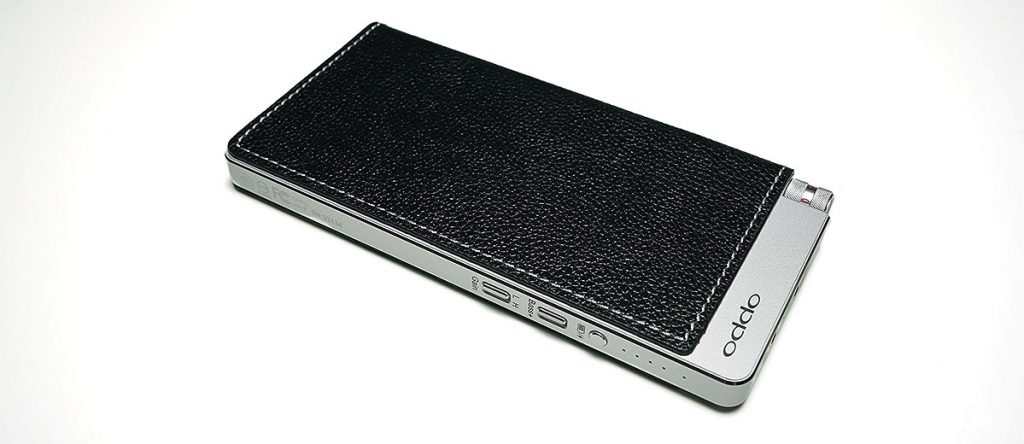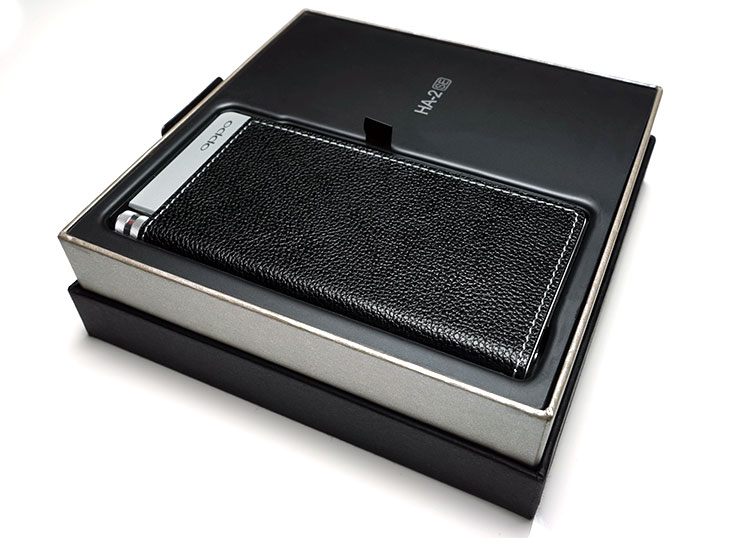The Oppo HA-2SE is a second-generation revision of the original HA-2 portable DAC and headphone amplifier. It is priced at $299.
Disclaimer: The Oppo HA2-SE was sent to us as a sample in exchange for our honest opinion. We thank Oppo Digital for this opportunity.
To learn more about Oppo products on Headfonics you can click here.
Oppo Digital nailed it for me in terms of form factor and pricing for the original HA-2 DAC/Amp combo back when we reviewed it in April 2015. Its slim profile was a perfect match for smartphone users to strap on to the back with minimal fuss as well as the all-round compatibility with Android, iGadgets, PC/MAC and power bank users making it one of the major go to mid-fi DAC/Amps for the last year or so.
Its only problem, if you could call it that, was the sound or tonal preference with its use of the ESS Sabre32 Reference ES9018K2M chip at the heart of a slightly inefficient or noisy amp stage. I could be overstating the issue slightly because I still think it’s a great sounding DAC/Amp but it did exhibit the famed Sabre glare in its treble response making it sound slightly less forgiving or harsher than some competing DAC/Amps such as the Picollo from Cypher Labs or the Companion One from Celsus Sound (also using a Sabre DAC).
New incredibly efficient IEMs such as the Andromeda and Jupiter from Campfire Audio have also hit the market since then and the HA-2 did also tend to show up a slightly higher noise floor also with some background hiss using IEMs of this type. So, it was an impressive DAC/amp debut from Oppo but by no means perfect.
What Is The Pitch?
I guess Oppo agreed because, with the launch of the $299 HA-2SE (Special Edition), they have taken the opportunity to carry out two major tweaks to the original HA-2 to combat those two specific problems either directly or indirectly.
New DAC Chip
The first major tweak is the DAC chip itself. Oppo has done away with the ES9018K2M with Sabre’s new chip solution for mobile devices, the ES9028Q2M SABRE32 Reference DAC.
This is the first time in 7 years Sabre have upgraded their chipsets along with the 9038PRO we are going to be seeing a lot of new decoding and DAP products on the market in the next 12 months using these chipsets for DAC duties. Sabre are touting the 9028 as having a better THD performance, particularly in its midrange 2nd harmonic order reproduction, increased dynamic range, and a generally flatter response than with the older ES9018K2M chip.
Gain Tweak
The second major tweak is a lowering of the gain levels in the HA-2’s amplification stage meaning the HA-2SE is now more responsive to efficient IEMs with a lower noise floor, easier volume control and still enough grunt in its Class AB design to push 300mW into 32 ohms.
What They Kept
The rest of the HA-2SE feature set is really a case of if it is not broken don’t fix it so you still get the excellent rapid charging VOOC system, OTG, lightning interfacing, power bank duties, dual gain settings, bass boost, PC/MAC DAC out capability and of course the very attractive design with leather wrap.
Build
Identification
Aesthetics and form factor on the HA-2SE are virtually identical to its predecessor. In fact, side by side you cannot tell them apart except for the SE part of the branding logo on the underside of exposed front aluminum chassis and what I believe to be a very slight color change in the aluminum alloy chassis of the HA-2SE which seems to be lighter in color. Now that may be simply a product of aging and humidity on my part so take that final observation with a pinch of salt but it is noticeable on the 2 units I have.
Smartphone Users
For those new to the HA-2 series, it’s a perfectly modern design for pairing with smartphones. In fact, it’s probably the best in the business right now. It is no surprise to me that subsequent derivative ideas from competitors for amping at the conceptual level have drawn from the HA-2 design given its fluent curves and slim line profile.
The Wrap
The wrap around its flex free aluminum alloy is distinctive and made from real leather with that very Asian white stitching around the edges. It does stand out from the crowd as a well-engineered audio product. All this makes the HA-2SE easy to hold, easy to work with and devoid of sharp edges and other nasties that make portable audio life at times physically uncomfortable. Gone is the need to add blister feet and you will less likely have inadvertent scraps and bumps when stacking the HA-2SE due to the leather wrap.
Inputs & Outputs
Front
Like a 50c barber, all the action is on the front, back and sides of the HA-2SE. To the front, you have the slightly recessed alps pot which doubles as a resistance based power on and off control. To the side of the pot on the front panel you have two jacks but with no less than 4 functions.
The first jack is the traditional headphone 3.5mm jack, a no brainer there marked out by the normal black headphone icon. Beside the headphone output jack is a rather more complex jack for audio in and line out marked by the letters “AB” under the line out label and “C” under the audio in label.
Back
To understand how this all works at the front you have to go to the back of the Oppo HA-2SE to access the source selector switch which is has three setting labels, A, B and C. When the Source Selector is set to “C”, the front jack acts as an “audio in” from a dedicated source.
When the Source Selector switch is set to “A” or “B”, the same jack becomes a line-out for the HA-2SE USB DAC. So why A or B at the back if the jack at the front does the same thing? Well, that’s because the HA-2SE has two different USB inputs; a USB A and Micro USB both of which cater to specific devices. The USB A port is for connectivity to iOS devices such as an iPhone or iPad or for charging a mobile device using the rather useful power bank function inside the HA-2SE. The USB Micro-B port is for OTG and connecting to a MAC or PC and for charging the HA-2SE’s own battery.
Sides
Due to the leather wrap, the HA-2SE side functionality is all housed on the right. There you will find the low/high gain switch, the bass boost switch, the battery/power bank check button and a row of 5 LED lights. The first four LED lights in green indicate HA-2SE’s actual internal battery level and the fifth LED light, which is a slight distance to the first four and in blue, indicates if the HA-2SE is in power bank mode.
Functionality
DAC
The HA-2SE now uses the newly launched ES9028Q2M SABRE32 Reference DAC which is purported to be a major upgrade on the older ES9018K2M used in the HA-2. As mentioned previously the unique selling points of this new chip is the all-round superior THD compensation performance particularly in the midrange second and even third harmonic distortion response.
These are excellent specs at +129dB DNR and –120dB THD+N so I am expecting a superior dynamic range than the older HA-2 also. The Q2M part of the chipset numbering is a reference to the mobile version of the 9028 series which, like the older K2M series, should have strong battery life performance.
The decoding capability of the HA-2SE remains unchanged at up to 32-bit 384kHz PCM or DSD-22.6MHz (DSD256) maximum. All the major codecs are covered so HibyMusic type users who like to jack in via OTG to bypass internal DAC duties of their sources should welcome the HA-2SE for its decoding prowess.
Amp
Oppo has resisted throwing out the amp stage of the older HA-2 so you still get fairly similar power numbers of 300 mW into 16 Ohm, 220 mW into 32 Ohm and 30 mW into 300 Ohm and still rated for headphones between 16 Ohm – 300 Ohm. There should be decent headroom for most dynamic headphones and the more efficient planars on the market to be driven fairly well.
The focus this time round on the HA-2SE has been the efficiency levels of the gain stage of the amp section by lowering it in such a way to reduce the noise levels over and above what the older HA-2 was capable of. This time, and combined with the superior THD compensation and dynamic range of the new DAC, the HA-2SE should offer a black background for efficient IEMs, lower noise and easier listening at lower volume levels.
As before, the HA-2SE with work seamlessly with both Android and iOS devices to allow software mapping from the device itself to the HA-2SE DAC for very precise volume control when combined with the HA-2SE analog pot.
Battery
As with the HA-2, the HA-2SE retains the unique VOOC rapid charging system which means you can have the HA-2SE from zero to 100% in around 1.5 hours using the supplied VOOC AC charger. That is pretty amazing and still a class leader compared to competing systems such as the Peachtree Shift, RHA DACAMP L1 and Chord Mojo which all came in at 4 hours on average for a complete charge cycle.
The 30o0mAH is not the biggest around but it will give you a healthy 13 hours on amp only duty and an average of around 7 hours when the DAC is deployed also. New amp designs (albeit with older 9018K2M chips) such as the RHA DACAMP L1 can churn out 10 hours on the DAC with a larger 4000mAh battery. This also may be of some relevance for those cherishing the power bank capability with the HA-2SE falling behind the RHA also in that respect.
Accessories
It is the same package as before with small IC’s terminated in lightning, micro USB (OTG) and analog 3.5mm as well as a data charging cable in white and the VOOC AC adapter, 2 rubber bands, and manuals.
Just one small but important update on the digital IC’s and that is the right angle terminated design for both the lightning and OTG cables whereas in the old HA-2 kit is with a straight cable termination. This makes it a lot easier for short bends in stacking and keeps the cables tidier and closer to the unit.
Sound Impressions
Tonality & Presentation
In comparison with the HA-2, the HA-2SE is a slightly flatter, cleaner and a definitely a more open sounding DAC/Amp. There is a case for calling it brighter but I would avoid any negative connotation with that term because for me it is also more refined sounding than before and, at times, makes the HA-2 sound a little veiled or compressed in comparison.
Bass
The low-end on the HA-2SE still has plenty of power, especially with the bass boost but this time the tonal warmth of the HA-2 is less prevalent so you may find the lower level of coloration on the HA-2SE to yield a more flexible pairing with some fussy IEMs and headphones.
Mids
Much of that perception of being veiled on the HA-2 comes with the HA-2SE sounding much more open and spacious in the midrange performance with better spacing for vocal reproduction than previously possible on the HA-2. Spatial cues are more tangible on the HA-2SE, instrumental placement and imaging a touch sharper, as well as sibilance being well under control. This is much more vivid or lifelike midrange response than what came before.
Treble
Another change up in the presentation of the HA-2SE over the older HA-2 is the reduction of Sabre “glare” and a perceptibly increased level of brilliance articulation in the treble performance. It sounds a lot more ‘neutral to natural’ now and not as splashy sounding as was often with the case on the HA-2 for synth and percussion attacks on its upper mids and lower treble.
It’s still got plenty of sparkle, and some of that will be dictated by the source, but it exhibits much better control and simply sounds more refined this time around. At the same time the HA-2SE offer superior extension than the HA-2 sounding a little airier with more headroom.
Click on Page 2 below for Comparisons & Matchability









